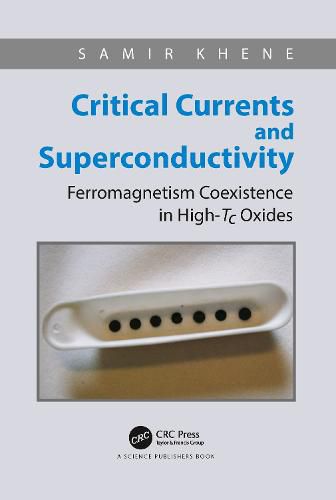Readings Newsletter
Become a Readings Member to make your shopping experience even easier.
Sign in or sign up for free!
You’re not far away from qualifying for FREE standard shipping within Australia
You’ve qualified for FREE standard shipping within Australia
The cart is loading…






The book comprises six chapters which deal with the critical currents and the ferromagnetism-superconductivity coexistence in high-Tc oxides. It begins by gathering key data for superconducting state and the fundamental properties of the conventional superconductors, followed by a recap of the basic theories of superconductivity. It then discusses the differences introduced by the structural anisotropy on the Ginzburg-Landau approach and the Lawrence-Doniach model before addressing the dynamics of vortices and the ferromagnetism-superconductivity coexistence in high-Tc oxides, and provides an outline of the pinning phenomena of vortices in these materials, in particular the pinning of vortices by the spins. It elucidates the methods to improve the properties of superconducting materials for industrial applications. This optimization aims at obtaining critical temperatures and densities of critical currents at the maximum level possible. Whereas the primary objective is the basic mechanisms pushing the superconductivity towards high temperatures, the secondary objective is to achieve a better understanding of the vortices pinning. This book is targeted at researchers and graduate students of fundamental and engineering sciences.
$9.00 standard shipping within Australia
FREE standard shipping within Australia for orders over $100.00
Express & International shipping calculated at checkout
The book comprises six chapters which deal with the critical currents and the ferromagnetism-superconductivity coexistence in high-Tc oxides. It begins by gathering key data for superconducting state and the fundamental properties of the conventional superconductors, followed by a recap of the basic theories of superconductivity. It then discusses the differences introduced by the structural anisotropy on the Ginzburg-Landau approach and the Lawrence-Doniach model before addressing the dynamics of vortices and the ferromagnetism-superconductivity coexistence in high-Tc oxides, and provides an outline of the pinning phenomena of vortices in these materials, in particular the pinning of vortices by the spins. It elucidates the methods to improve the properties of superconducting materials for industrial applications. This optimization aims at obtaining critical temperatures and densities of critical currents at the maximum level possible. Whereas the primary objective is the basic mechanisms pushing the superconductivity towards high temperatures, the secondary objective is to achieve a better understanding of the vortices pinning. This book is targeted at researchers and graduate students of fundamental and engineering sciences.